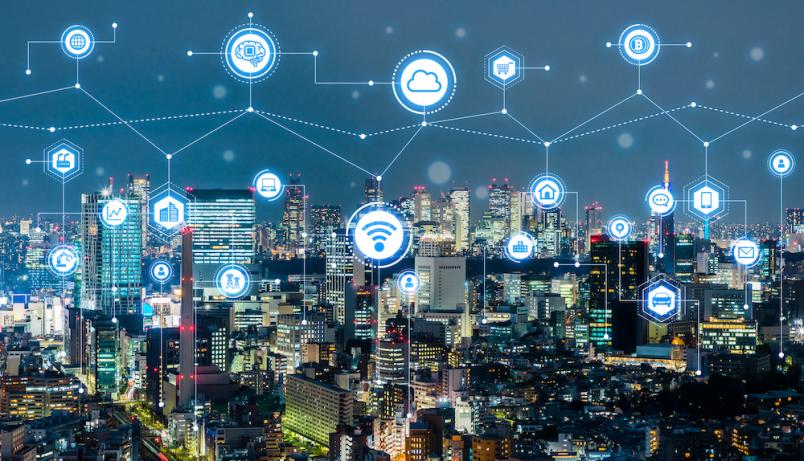
Data have become pervasive in ICT applications and systems. This presents huge opportunities to exploit such data to improve our society, as well as significant technical challenges. In the ICTE4SS degree, we put a lot of emphasis on data analysis methods aimed at extracting information from data and make decisions based on them.
In the course “Machine learning and neural networks” we teach classification and regression methods based on machine learning and the basics of deep learning. We focus on the application of these methods to data arising in key ICT applications, including user localization, document classification, hyperspectral imaging for land cover analysis, object tracking and character recognition.
In the course “Machine learning for health”, these techniques are applied to several medical and diagnostic problems by means of image processing and other data analysis methods. The elective course "Advanced machine learning for imaging and vision" builds upon the machine learning fundamentals studied in the other courses to explore cutting edge deep learning topics in vision. This includes transformer-based foundational models for multimodal processing, and neural networks for computational imaging problems like super-resolution. It also delves into the latest diffusion-based generative models for image synthesis and how to personalize them.
We offer a course on "Operational research: theory and applications", applying advanced mathematical modeling, statistical analysis, and mathematical optimization, to find optimal or nearly-optimal solutions and decisions. These tools are applied to typical problems arising in computer network design, such as: infrastructure capacity planning, optimization of the set of routes, definition of the maximum flow a network can support.
Along the same lines, the elective course “Big data for Internet applications” addresses the problem of how to collect, store, retrieve, and analyze big data to mine useful knowledge. The course also addresses novel programming paradigms (e.g., MapReduce, Spark RDDs) and discusses how they can be exploited to support big data scientists to extract insights from data.

New networking technologies of IoT (Internet of Things) and Device-to-device (D2D) communications are emerging in ICT applications. Both are fundamental paradigms to enable smart cities, smart factories, and smart health. IoT implies that objects will be connected and able to exchange data with a server in the network infrastructure. D2D communications instead allow user handheld devices to share data directly, without the need for an infrastructure, thus reducing monetary costs and energy consumption for the end user.
The “Mobile and sensor networks” course explains the main principles and issues in these kinds of systems, as well as some fundamental concepts that should be followed for their design and deployment. It gives an overview of the main algorithms and protocols that at the basis of today's networking technologies for IoT, device-to-device and vehicle-to-vehicle communication, connected cars.
An elective course on “Innovative wireless platforms for Internet of Things” addresses standards, hardware, network and physical layer designs for IoT, RFIDs, personal and body area networks, and complex and constrained environments such as water, fire, jet engines, oil/gas platforms, human and animal body.

Internet of Things includes a wide spectrum of technologies ranging from low-power devices, communication protocols and algorithms whose purpose is to make everyday objects interactive and reachable from remote, through the Internet. This connectivity revolution not only allows humans to get and send information from objects, knowing their state and acting to change their behavior independently from their location, but also enable machine-to-machine interaction, creating collaborative, self-organizing and adaptive environments.
Applications are in many fields, such as home automation, smart industry, smart energy and smart health. The "Programming for IoT applications" course offers the basic programming methods to develop a complete Internet of Things ecosystem. Students learn how to retrieve data from IoT devices and how to develop and manage a web platform for monitoring, processing, visualization and actuation.

A key aspect of smart environments is the possibility to connect several devices of different type, including sensors, smartphones, computers, cameras, ..., and humans.
The devices communicate, exchanging data and information, and make the environment smart: context conditions are monitored, critical situations are detected, automatic decision making is enabled. Networking for smart environments presents a number of challenges, such as interoperability among devices designed with different constraints, network self-configuration and resilience under potentially fast varying scenarios, power supply for devices that cannot access the power grid, distributed approaches, and security issues.
During the ICT4SS programme, the course “Management and content delivery for Smart Networks” presents the fundamentals of networking technologies and discusses applications to different environments, from electricity distribution and energy supply systems, to domotics and mobility.
The course "ICT for smart mobility" applies these methodologies to study and design smart transport systems, with labs using real data coming from cars sharing systems.
Finally, the elective course "Applied Information Security and Cryptography" covers the main security topics in smart networks, including confidentiality, integrity, authentication, and introduces cryptographic techniques and security protocols to address those issues.